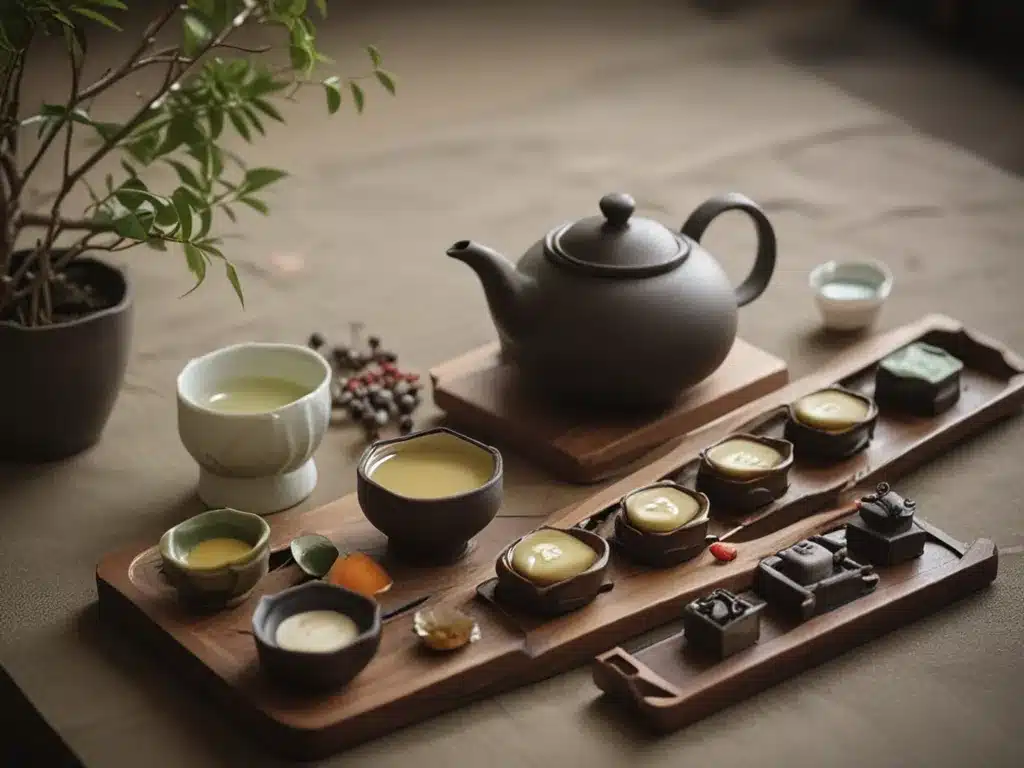
Origins of the Gongfu Tea Ceremony
The gongfu tea ceremony has its origins in China during the Tang dynasty. Tea drinking was initially a casual pastime but over time developed into a complex ritual centered around fully appreciating the subtleties of finely processed teas. Monks at Buddhist temples in regions like Yunnan and Fujian are credited with refining the gongfu cha ritual into its modern form. They sought to relax the body and calm the mind through deeply focusing on the tea’s changing flavors, aromas, and visual qualities extracted through multiple steepings.
The gongfu tea process I will follow involves using small porcelain teapots and cups that hold only 30-60ml each. This allows one to brew leaves numerous times using less material but extracting more flavor with each infusion. The tea leaves are measured precisely according to number of people rather than by weight. Typical ratios are 1-2g of leaf per person. Freshly boiled water between 95-100°C is poured over the leaves in the gongfu cha set to begin the first steeping.
Appreciating Tea’s Complex and Evolving Flavors
With the first steeping of a quality oolong or white tea, subtle floral, honey-like, and vegetal notes can be detected on the tongue. The warmth spreads through the body providing relaxation. Each subsequent steeping brings out new flavor dimensions as different compounds are released from the leaves.
By the third steeping, a vibrant aroma arises from the cup. This allows taking a moment to deeply inhale its rosy, peach-like scent. One can observe how the leaf color changes and shape alters with each soaking. Lightly rolling the leaves between the fingers feels them transform from crisp to silk-like. By steeping five or more times, a livelier orchid or roasted chestnut essence develops. The finish also changes from short to lingeringly crisp.
Appreciating these complexities requires patience and dedication to fully concentrating the mind on subtle sensations. Careful observation of all the multisensory elements unfolding over multiple brews reveals how each type of tea is like a work of art. The experience refines one’s awareness of tastes and aromas while calming the nerves.
Comparing Steeping Methods: Gongfu Vs Western Style
| Gongfu Method | Western Method |
|---|---|
| Small 100-150ml gaiwan or pot | Large 350ml-1L teapot |
| 1-2g leaf per person | 1 tsp leaf per 6oz water |
| Freshly boiled 95-100°C water | Freshly boiled or near-boiling water |
| Short 15-60 second steeps | Long 2-5 minute steeps |
| 5+ infusions extracted | 1-2 infusions extracted |
The gongfu cha process extracts much more complexity from the leaves through smaller volumes, higher leaf ratios, and shorter steeping times. This allows appreciating each nuance the leaves have to offer over multiple brews. While the Western method can produce a mildly flavored single infusion tea, gongfu unlocks a tea’s full potential for detailed examination and enjoyment of its changing character.
Personal Experiences Appreciating Tea’s Complexities
Through regular practice of the gongfu tea ritual, my ability to perceive subtle tea flavors and aromas has greatly improved. At first, the many dimensions slipping by in each infusion escaped my notice. Now I can pick out light elderflower or mango essence developing midway through steeping an oolong.
During a recent tasting, I was fortunate to drink aged puerh tea with a renowned sifu. As the tea steeped, a mesmerizing spectrum of woody, earthy, and honeyed notes wove in and out, kept evolving over seven infusions. My sifu enthralled us by perceiving changing flavors none of the students could detect. His keenly honed senses allowed appreciating that special tea’s intricacies to their fullest.
This experience reinforced gongfu cha’s importance as an artistic ceremonial practice. It cultivates mindfulness, focus, and our innate ability to immerse in subtle sensations most miss. The complex flavors teas offer become like a moving artwork to unravel cup by cup through dedicated observation and appreciation of each elegant infusion.






